The studio GROUPWORK + Amin Taha renovates a house in London with touches of AHEC American cherry tree wood
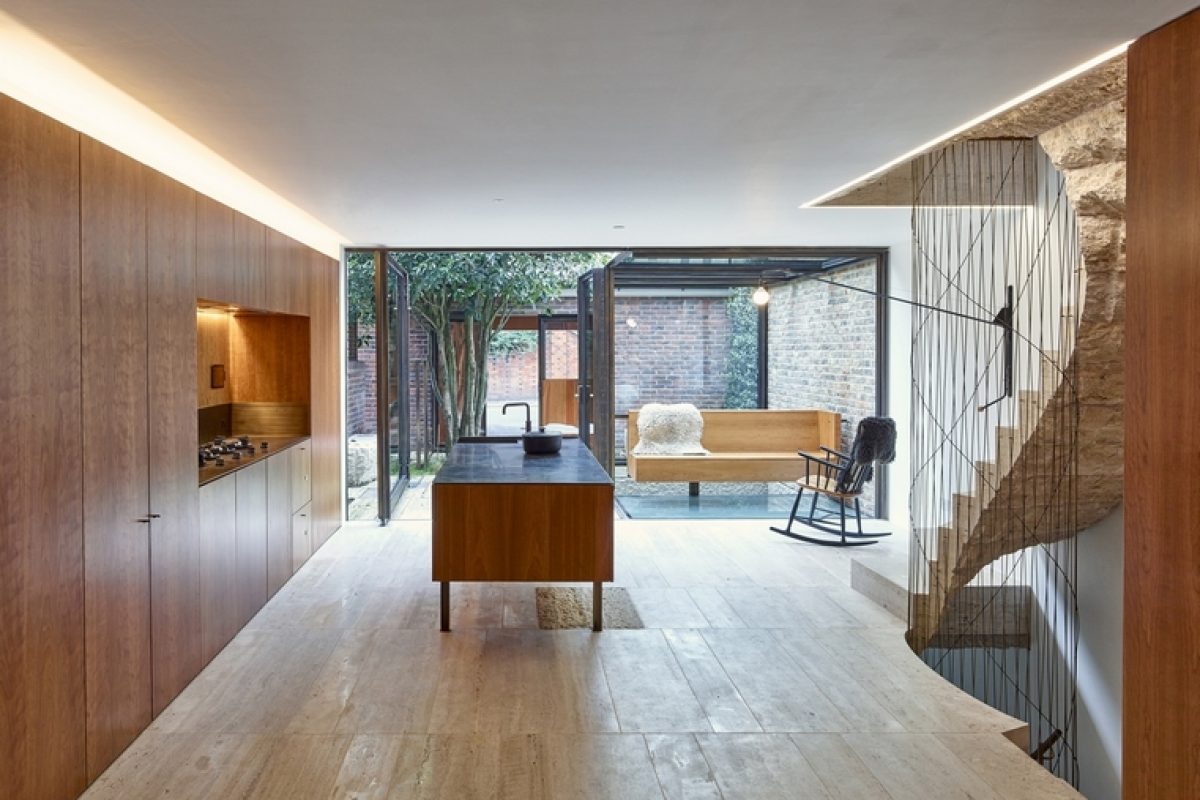
The American Hardwood Export Council (AHEC) is the leading international trade association for the U.S. hardwood industry, representing the committed U.S. hardwood exporters and the major U.S. hardwood product trade associations.
AHEC presents a new housing project, renovated with its American cherry wood. This project has been carried out by the English architecture studio GROUPWORK + Amin Taha. It is a house from the 1950's, in which the studio has intelligently restored the travertine and has used American cherry coatings.
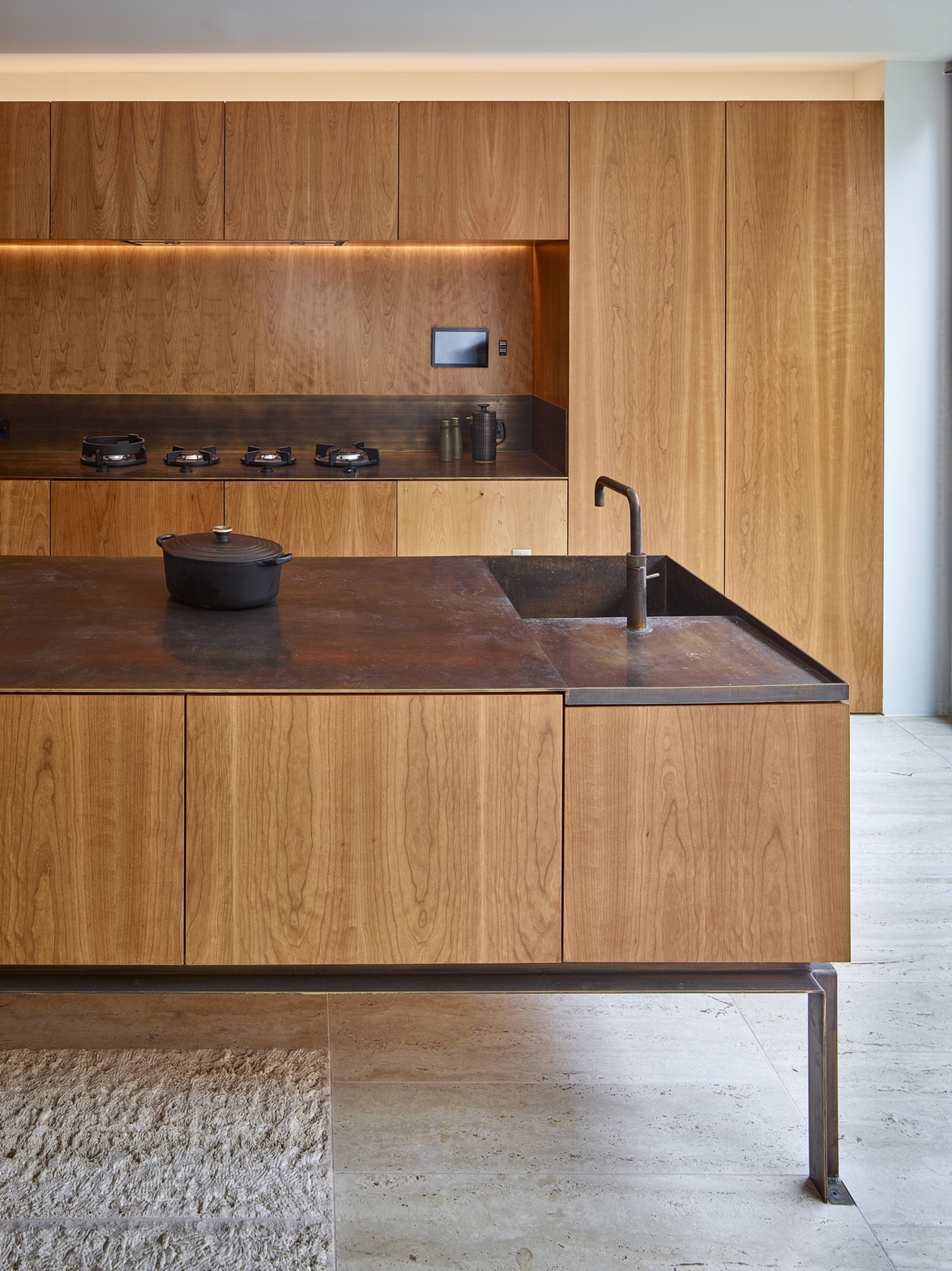
The house is located in Caroline Place, a quiet enclave of terraced houses, north of Hyde Park and Kensington Gardens in London. Event though the interior design alludes to northern Europe, with the sharp rows of brick, the sharp mortar joints, and with wood details that attenuate the hardness, it remains firmly rooted in the Edwardian tradition of the early twentieth century.
“We loved using the cherry tree in this project because it is a largely underused wood,” says Amin Taha. “It is the perfect material for interior projects due to its softness and warmth as well as the fact that it can easily provide a luxurious finish.”
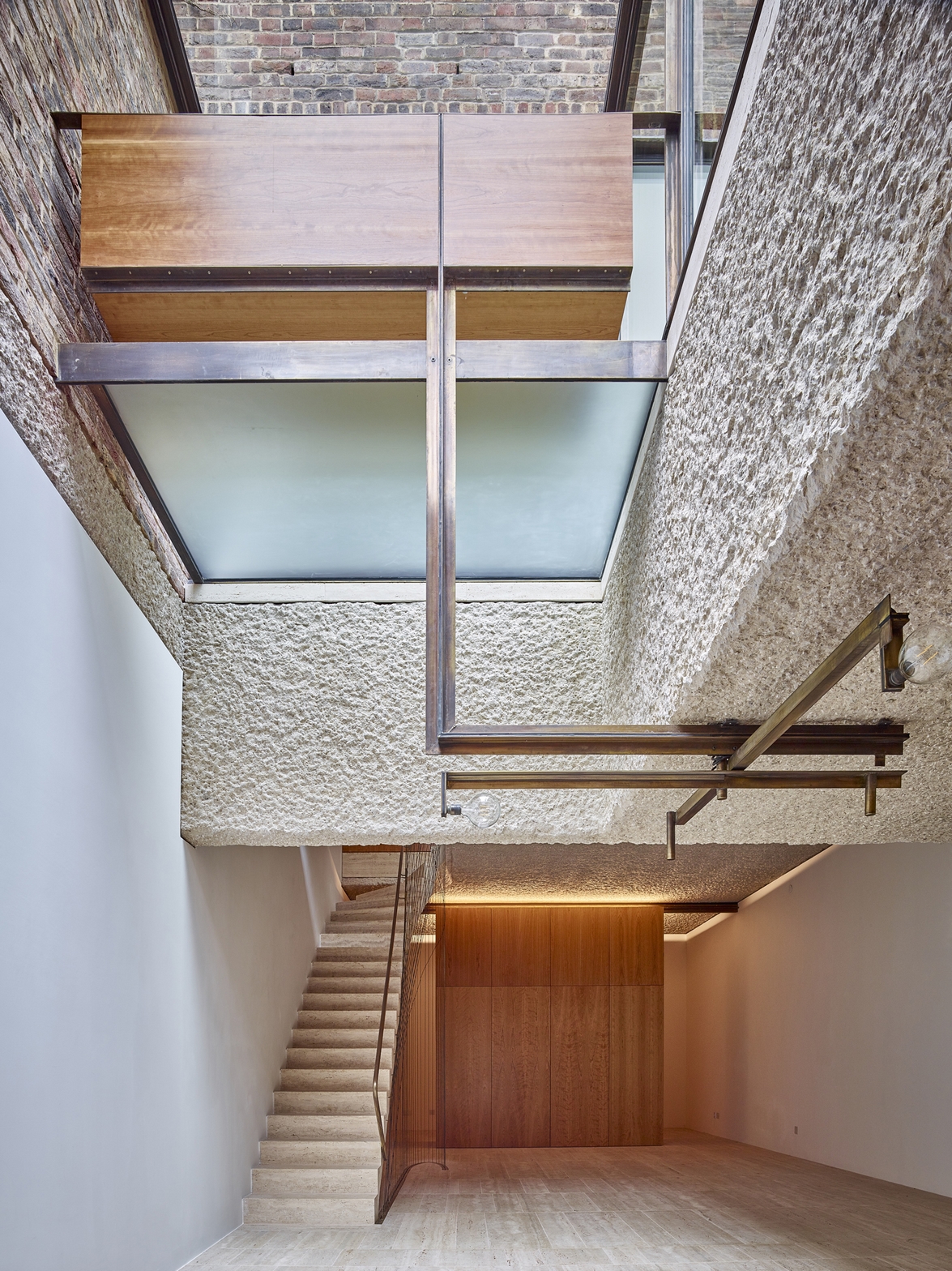
In the dwelling, the zone occupied by the owners was separated from the dependencies of the service, consisting of bedrooms, the kitchen and a backyard. The servants occupied the basement, while the owners resided on the upper floor, of larger and more lighted rooms.
In the period immediately after the war, the house underwent a remodeling, eliminating the walls that compartmentalized the interior and also remodeling, as much as possible, the exterior, giving it a more appropriate appearance and distribution for the time.
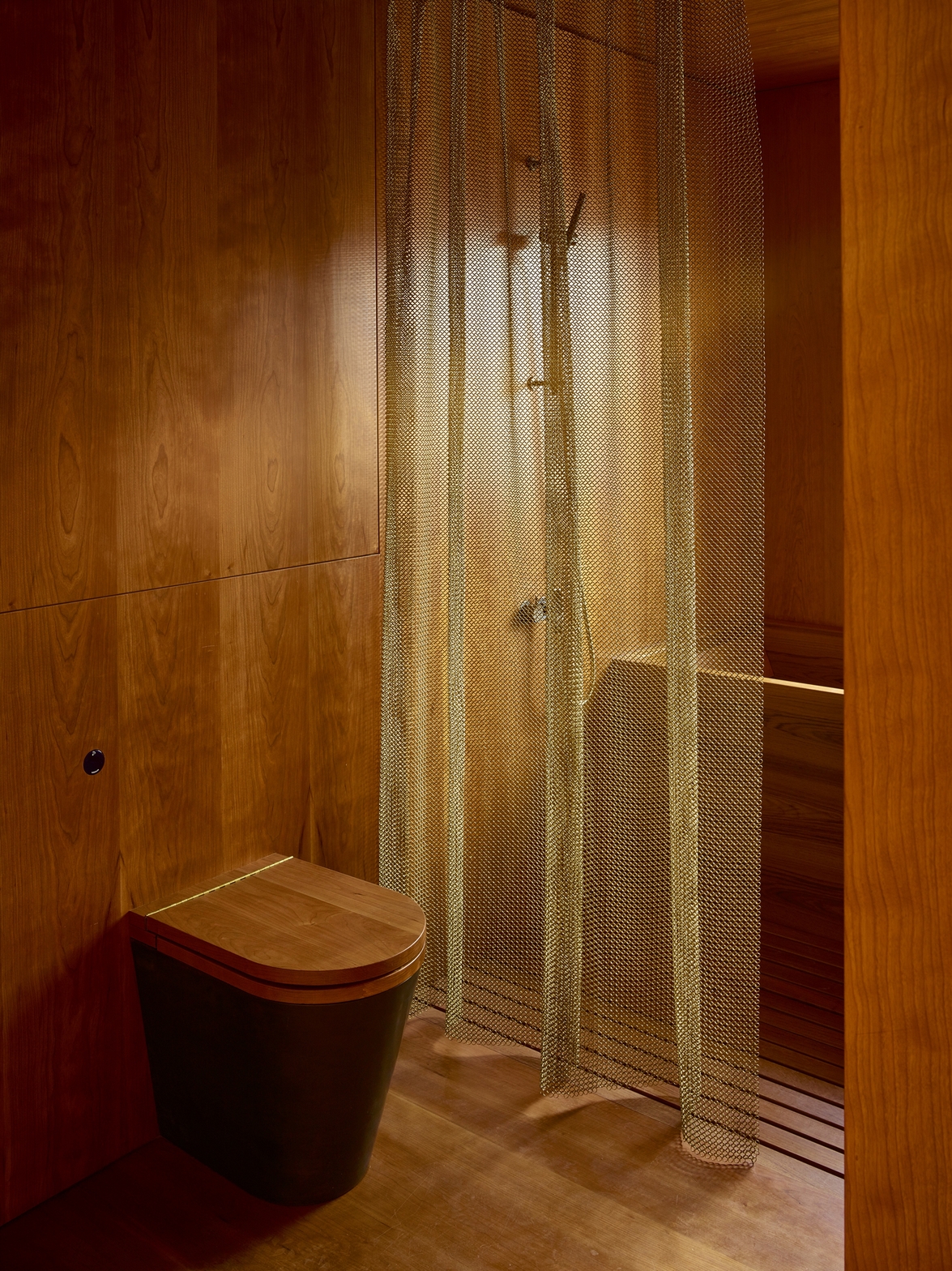
Four decades later, the new occupants, a family of five, still have the same desire to reside in an open-plan house and the same preference for finishes with tactile materials, although in other respects the tastes have changed.
A supporting cantilevered travertine staircase, which lower part has been left as it left the quarry, ascends in spiral towards the skylight of the upper part. The combination of these strategies allowed structuring and defining the lifestyle desired by the new occupants, offering them enough flexibility to grow and adapt to the changes, enjoying at all times the details of the design, which is perhaps the most lasting legacy of the restoration.
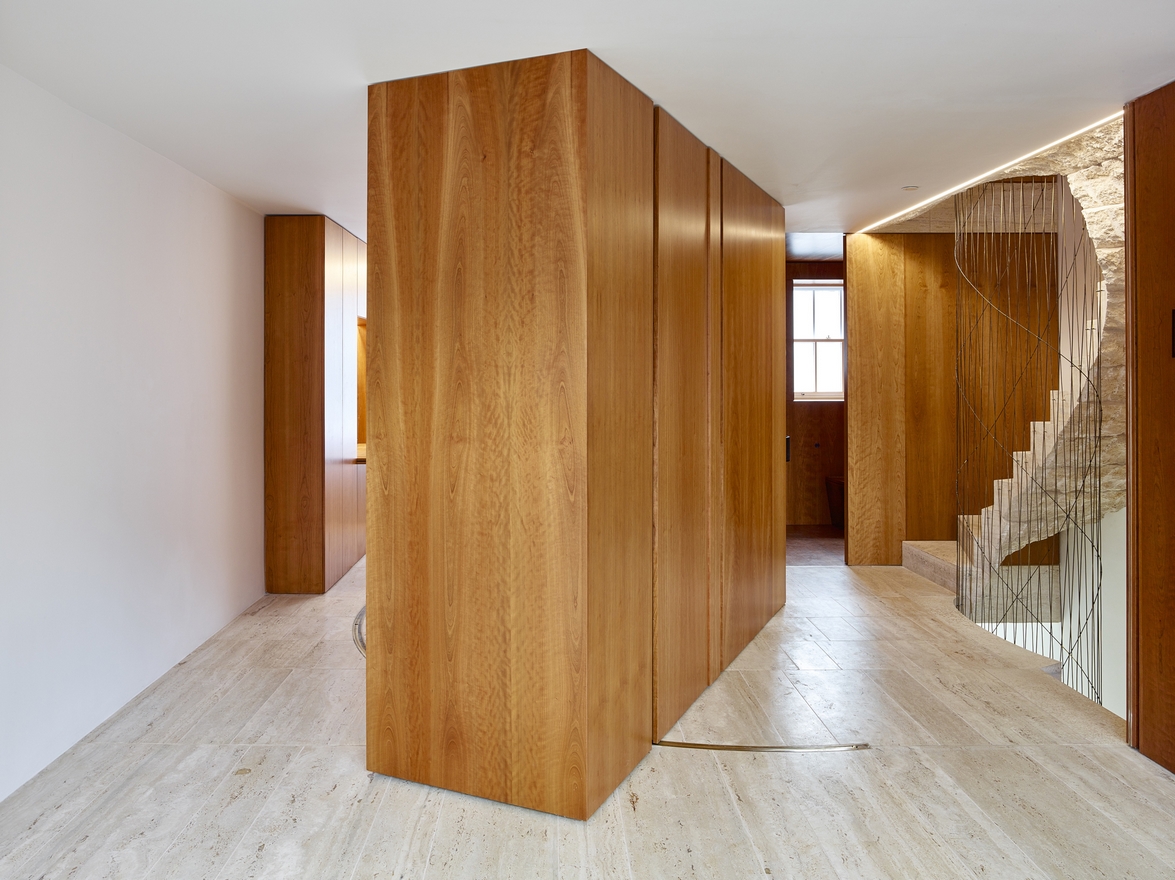
Initial works revealed remains of original travertine floors, walls covered with a thick plaster behind the pine coverings of the 70s, and a room lined with dark American cherry panels.
The architects used wooden elements covered with cherry wood to spatially define the areas between the rooms.
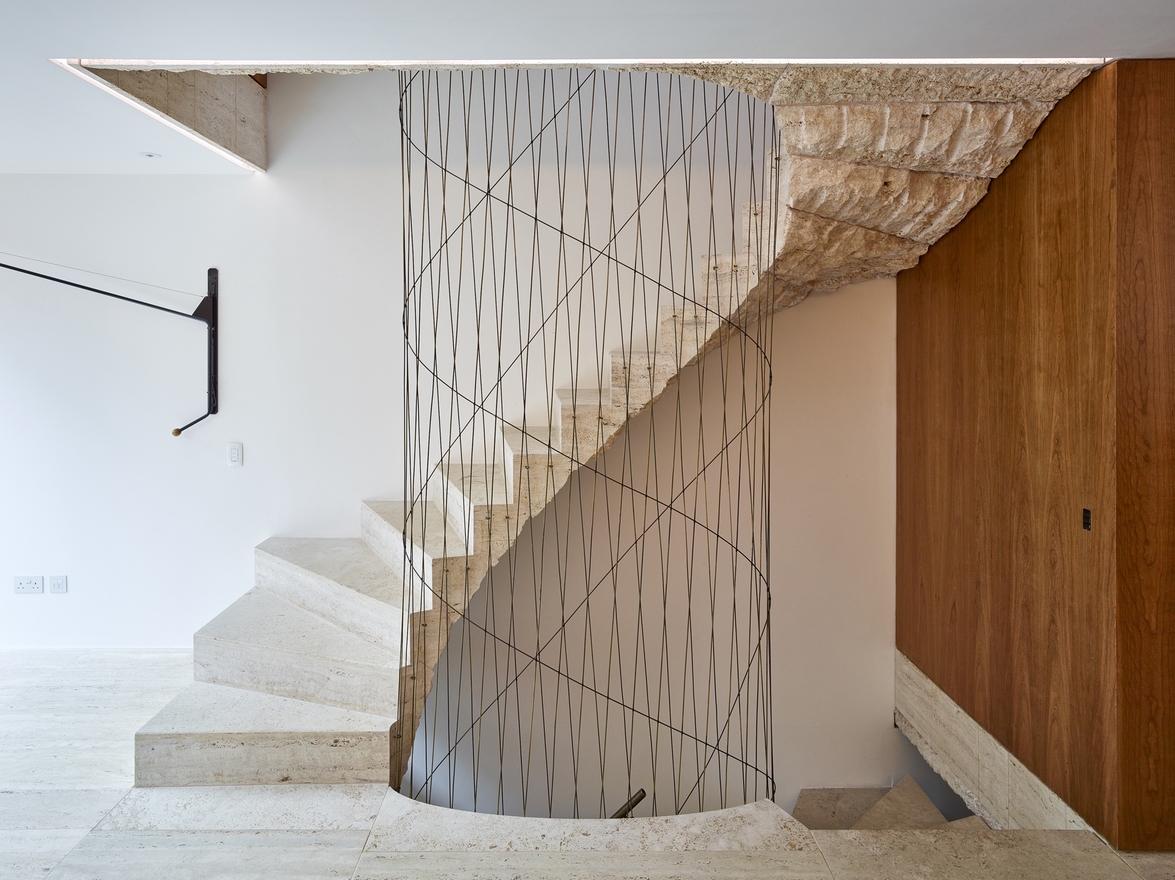
The first floor can be used in its entirety as a single reception room with a study area in one corner. Two adjacent shelves, extending to the ceiling, can be deployed as sliding doors to close the room and separate it from the study. One of them contains inside a guest bed that, when opened, allows the study to be converted into a bedroom.
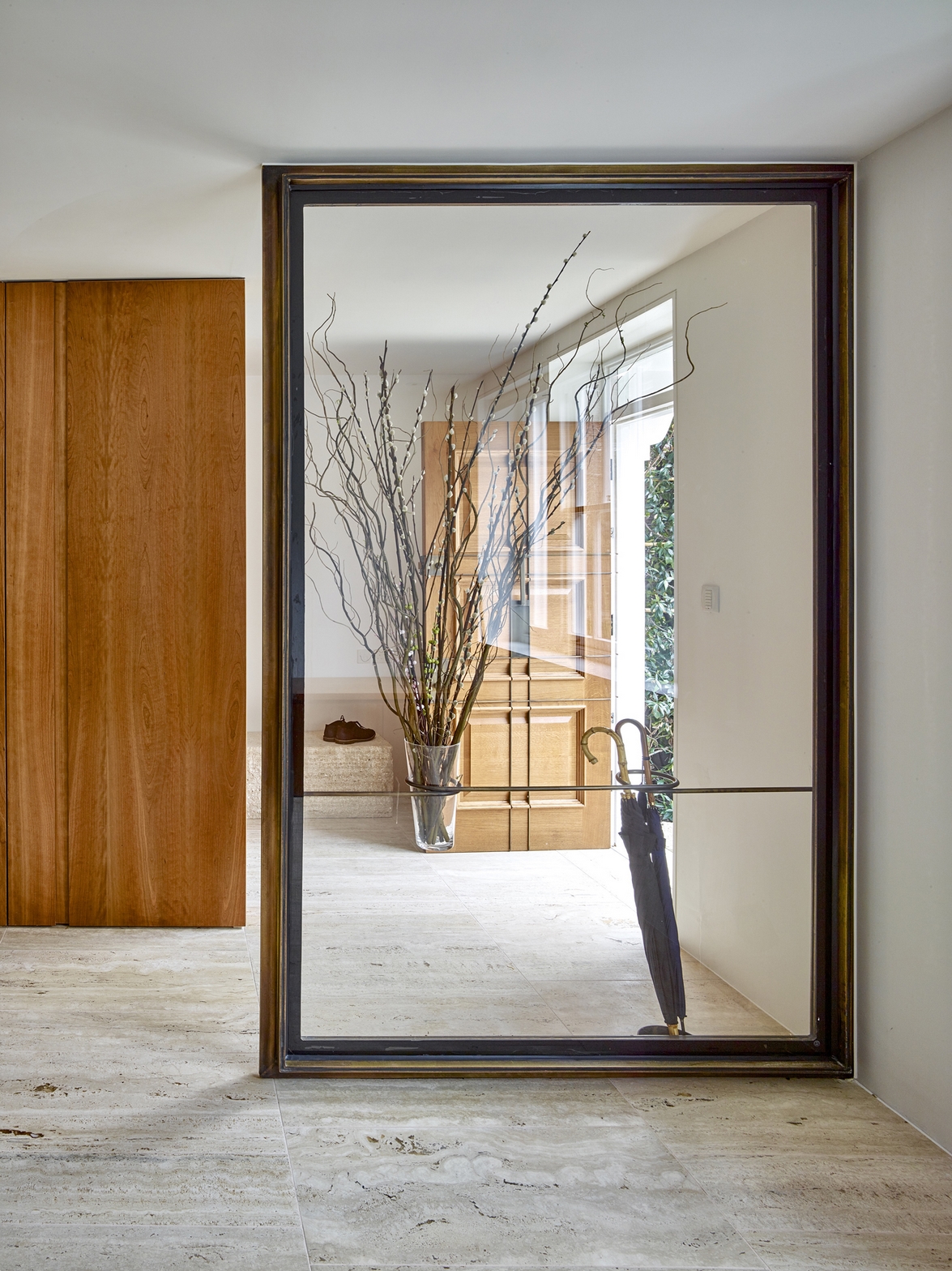
The wooden elements reach to the ceiling and have integrated lighting elements to highlight them as independent functional elements.
“The American cherry tree is one of the fastest growing temperate hardwoods, although it is still largely underutilized. Caroline Place is an extraordinary example of how the intense reddish-brown color of this sustainable species can add a touch of warmth and sophistication to a project, “says David Venables, European Director of AHEC.
Source: AHEC
Read more news related with AHEC published on Infurma
News Infurma:
Online Magazine of the International Habitat Portal. Design, Contract, Interior Design, Furniture, Lighting and Decoration
